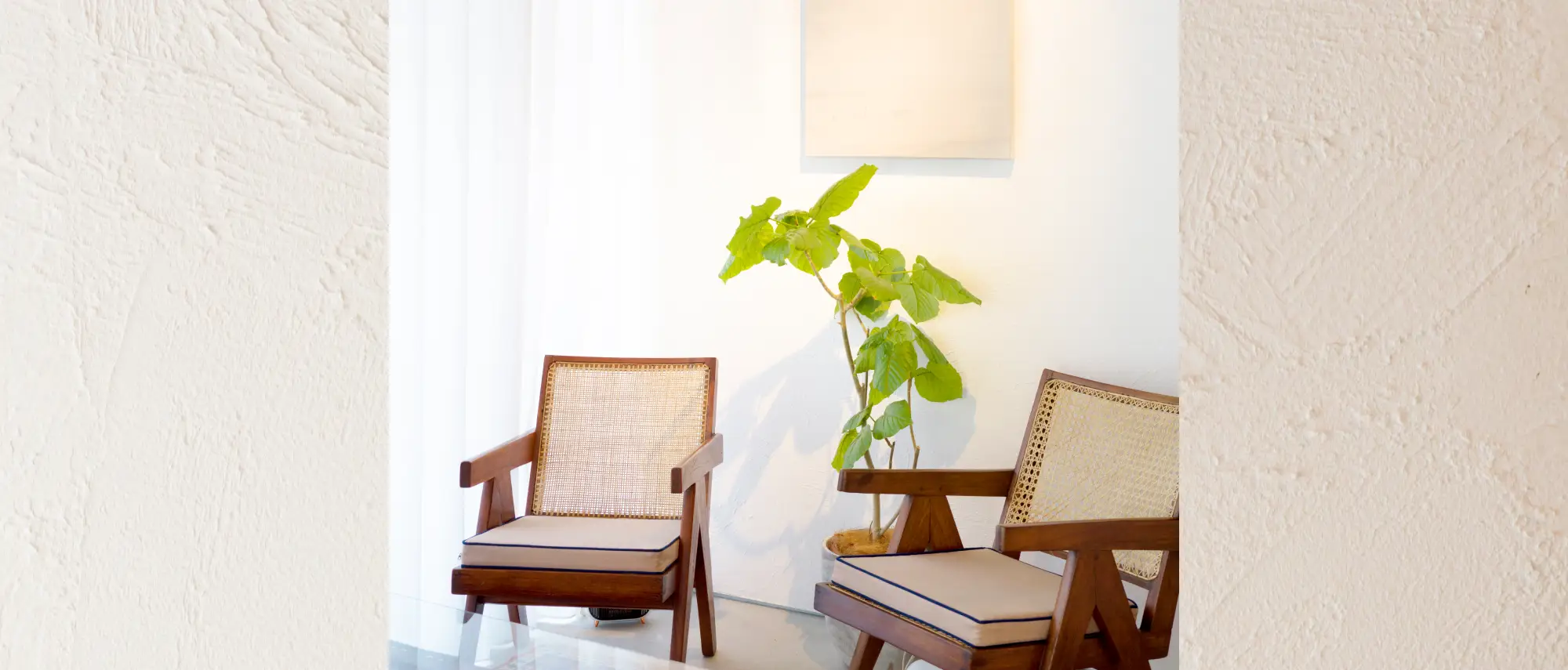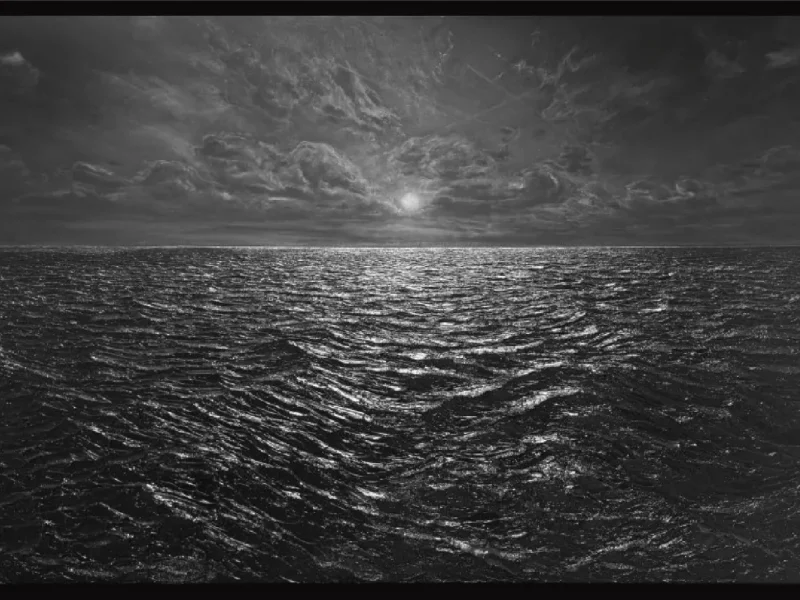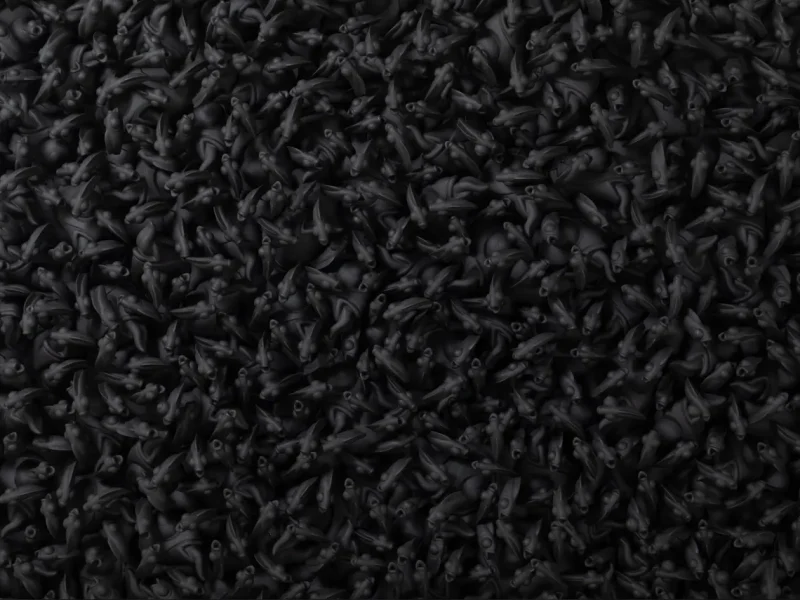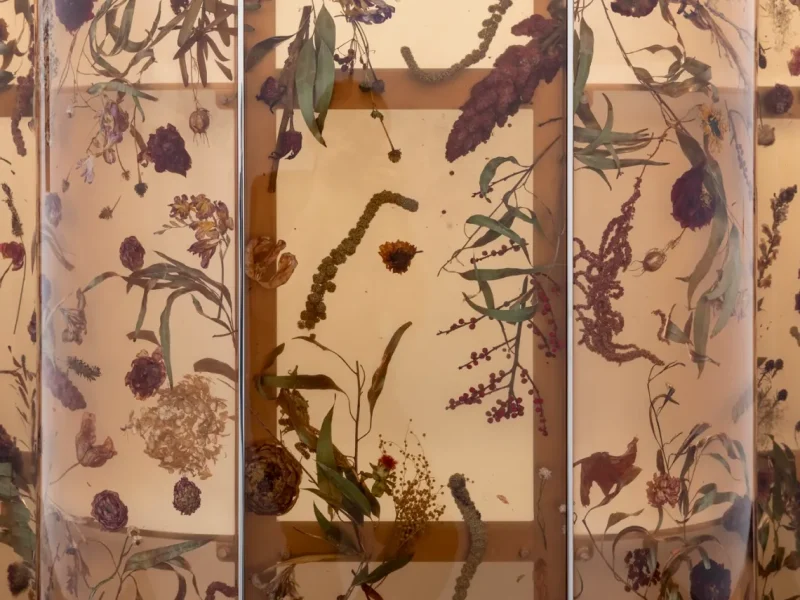We interviewed Shin Takeuchi, an art collector and former Director and CTO of Visional, Inc., who manages many fine dining establishments. We interviewed him at one of his restaurants, ISSEI YUASA, a restaurant in Nishi-Azabu, Tokyo.
In 2024, the TAKEUCHI COLLECTION “The lens within your heart” was held at WHAT MUSEUM in Tokyo, featuring contemporary artworks collected by Shin Takeuchi.
"It is interesting to see how my sense of value changed."
Does your music career have any influence over your art collection?
When I was doing music, I was often surrounded by illustrators and artists who were still unknown, so I do think there was influence.
It was normal for me to buy their works at a very low price and display them in my house, but not necessarily in the same way I think about art these days, but this probably led me to the world of contemporary art in.
In every form of expression, there is an idea, policy, or style that gave birth to that expression. Although the means of expression in the form of music and visual art are different, at their cores I think they are very close. In terms of creativity, they are both inspiring.
Can you tell us about the first time you purchased artwork?
I had just bought my first house, and I thought, “Now that I own a house, no one will complain if I drill holes in the wall.” (ed. note: in Japan, renters often get penalized for drilling holes into walls) I had been thinking of what I wanted to hang on the walls, and when I thought about it, my first thought was to hang a Monet piece.
When I looked it up where to buy a Monet, I found out that they were available at auctions. I joined the auction and tried to bid on it, but the price quickly became outrageous. The bids went way over the estimate, and I ended up not winning.
I searched for a while, but there wasn’t anything similar on the market. I had this urge, “It is not good to go through life without buying or displaying a painting. I need to hang something on my wall…”
I promised myself I’d buy something at the next auction I attended. There, I saw a Picasso etching for sale and thought, “Okay, I know Picasso.” At the time, I didn’t understand what an etching or an edition was, but I knew that it was a reputable auction house and therefore it couldn’t be a fake. I put in my bid, and I happened to win. That was the beginning of my collecting journey.

You’ve supported many young artists so far. Can you talk a bit about what influenced your decision to do so?
Supporting young artists is something that I was most interested in a few years ago, actually. Now I only support a very small number of artists.
At that time, I was also involved in music and making art, but my main focus was on business. In principle, I don’t think artists are great businesspeople. They are more in pursuit of expression that only they can achieve, which I think is wonderful.
When I buy work of an artist who is living a way of life that I would not have chosen, I continue to look at their work and career. I get the feeling that I am being given a glimpse into the artist’s life, a life that I didn’t choose.
Has your perception of art changed since starting to collect?
It has changed a lot. I did not understand a lot of things at first- Picasso and contemporary artists all used to be in the same category in my mind.
Then, I learned that there’s so many different approaches to art- modern and contemporary, figurative, abstract expressionism, Dadaism, and many other things. In the end, being in this industry, you get to know about these things without actively studying. Within the categories I delved deeper and deeper into what genres I liked the most, and I ended up with abstract art.
I feel that my main interest now is abstract with a little bit of conceptualism.
To me, this part of art has an element of “wabi-sabi (ed. note: finding beauty in the transient and the imperfect)”, and I’m quite drawn to it.
I think there are a lot of things about these kinds of works that are close to our senses as Japanese.
When I feel something I like about a work, I am being taught about my roots from art.
Do you have any special memories of interacting with artists or gallerists?
Shortly after I bought a piece at an auction, I learned about primary and secondary markets, and that art is also sold at galleries.
People told me and introduced me to many, and I had the opportunity to go to Perrotin in the early days when I started going to galleries.
I chose Perrotin thinking it had a rather unique ring to the name in Japanese, until I realized it’s French. I happened to meet the artist Izumi Kato there, and while talking to him I thought to myself, “Wow, he definitely has the aura of an artist.”
As a novice collector, that was my first communication with a Japanese artist who was well established in the global art market. Even now, I often recall my meeting with Mr. Kato.
Another one was when I went to see a solo exhibition of an artist for the first time at Taka Ishii Gallery. When I saw the work, it just left me wondering what I’m supposed to do.
I remember blurting out loud, “Will there ever come a day when I will understand this?” and being told, “Sure you will, I am sure it will come.”
Recently, I went to their solo exhibition at Taka Ishii Gallery, but this time I found it quite interesting. I surprised myself how in the end, I came to understand their work a little bit better after all this time.
"…you start to see their specific signature that you can only find in them. …I think it's wonderful to see artists with that strength."
Do you think any of your values were changed by art?
It is interesting, isn’t it? When I continue to see people who have devoted their lives to the ultimate expression of their work over time, I am very moved by it.
I’d say that a person who can understand and appreciate a difficult artwork at first encounter is a bit unusual. But if you spend time with and interact with many artists, you start to see their specific signature that you can only find in them. If the consistency is incredibly strong, it’s even more amazing. I think it’s wonderful to see artists with that strength.
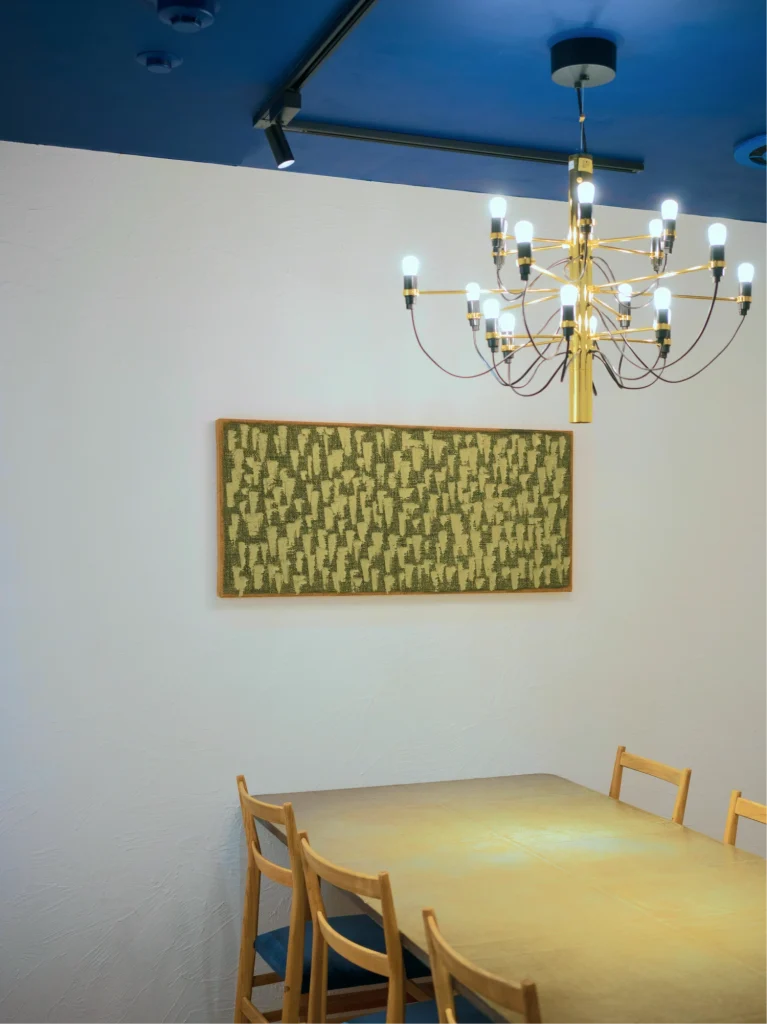
Is there anyone you consult with when buying art?
In principle, I decide alone, but there are several people I can consult. Usually when I take a long time deciding, I end up not buying. I might not consult with people about buying, but often ask around for research reasons.
In supporting young artists, there are many who, from my very subjective point of view, lose their stoicism or have changed their ways, which I think is unfortunate.
Nowadays, when I buy a piece by a young artist, I wonder whether they have the power, whether they will not be swayed by the fickleness of the market, and whether or not they will stick to their principles. I want them to stick to their values. But I also want them to be successful in the market as well.
I have come to realize that unless artists have both stoicism and a sense of balance, they probably won’t be able to continue as artists, so I ask people I know if they are that kind of person.
I really don’t like feeling like I don’t want to support someone anymore.
That’s why I take care in observing the artist when I feel that connection with their work.
Do you interact directly with artists?
Of course. There are many artists I get along with, whether they are old or young, Japanese or non-Japanese, but truthfully, I feel it’s best if I didn’t meet the artists.
I don’t have a preference whether it is the artist or the gallerist who explains the work. I think gallerists explain things more clearly to me, perhaps tailored to me in a way I can best understand.
What do you consider when purchasing artwork?
Buying truly unique pieces gives me a stronger connection to the work.
Flat works are easier to display than three-dimensional ones, so I do have a tendency of collecting paintings and flat artworks.
Despite the fact that they may be wonderful or important pieces of art, works with motifs that are difficult to display, or works with very grotesque expressions don’t really speak to me because I feel like I don’t have a place where I can display them.
I also display abstract art in my home, whether they are minimalist or abstract.
I would say that the abstract works tend to be simpler in composition, or not so heavy or busy. I think that I prefer more abstract works that have a subtlety to them.
I eventually ended up buying a Monet, which is hanging in my living room right now. I think about the centerpiece of a room- the other pieces on the other walls are pieces that will not clash with the Monet.
It is the same with my restaurants, where there is a main wall, and I decide what to hang there first. Once I decide that, the other walls fall into place.
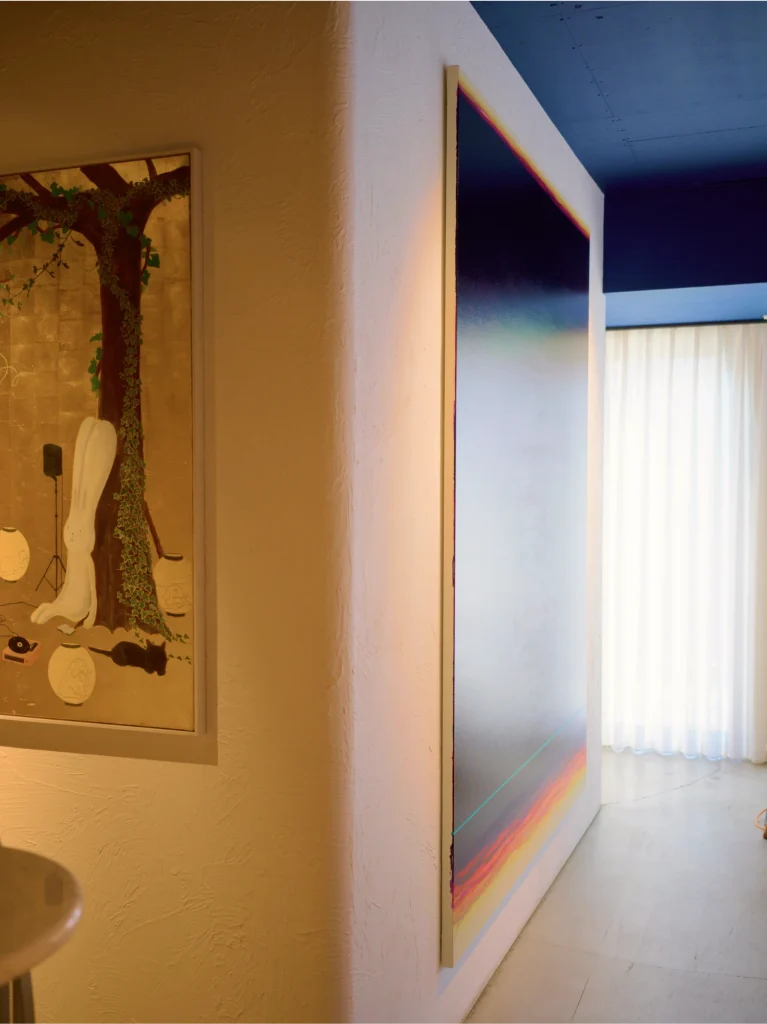
On the right, a work by Shingo Francis displayed at the restaurant, ISSEI YUASA.
This one is the main piece.
I change it from time to time, but when I change the artwork, I always start from this wall.
I actually met Shingo Francis through Eri Takane (Fair Director of Tokyo Gendai), and this piece was a commission. I think his work and mentality are pretty similar to mine, and I really like his work.
In the current setup, I arranged the other artworks with Shingo’s work as the main component.
The work behind me is very subtle, not very heavy. [The Shingo Francis piece] is navy blue, and it’s very impactful, so I wanted the other ones to have a nuance of transparency, or a white-gray kind of feeling. I try not to have the surrounding artworks fight with each other too much.
<Read the second half of the interview, where he talks about art as an investor and the differences between the Japanese and international contemporary art scene!>
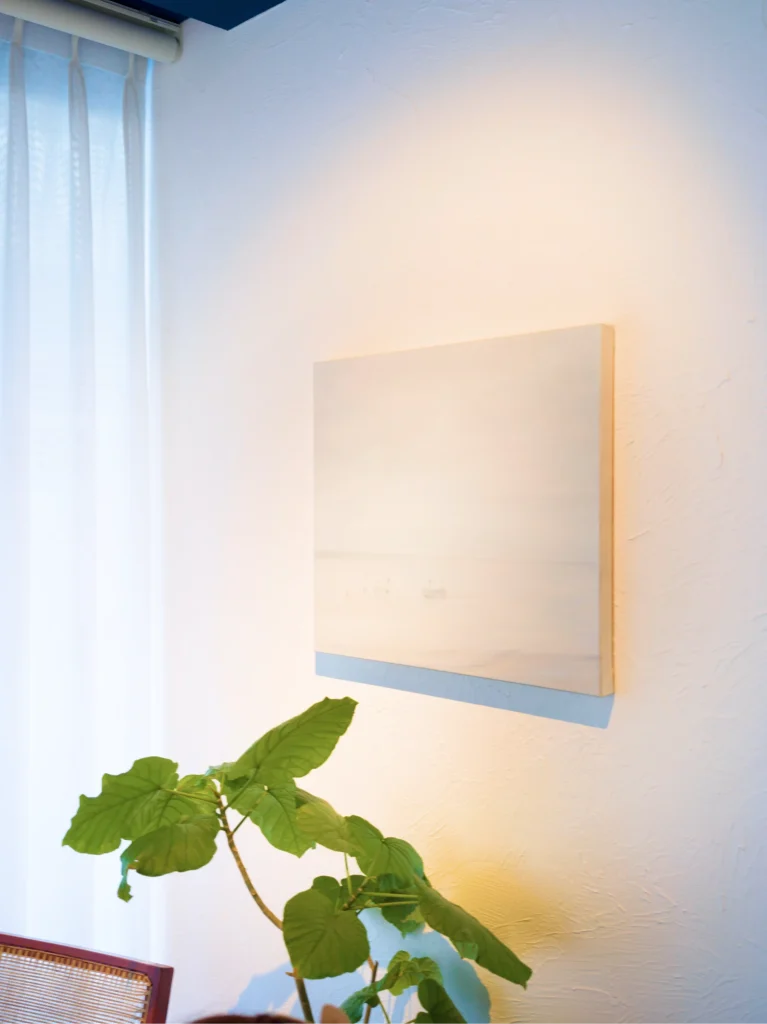
Shin Takeuchi Profile
Born in 1978, Shin began his career at Fuji Soft Incorporated, where he was involved in system development for government entities and major telecommunication firms. After working as a freelancer, he joined BizReach, Inc. during its founding phase, a leading Japanese job-matching service, later serving as CTO of Visional, Inc. and as a board member of the Japan CTO Association. He is currently a director at Medley, Inc. and actively involved in the management of several other companies. In addition to his corporate roles, he also operates a number of fine dining establishments in the Tokyo metropolitan area.
Photos by Yasutaka Ochi

